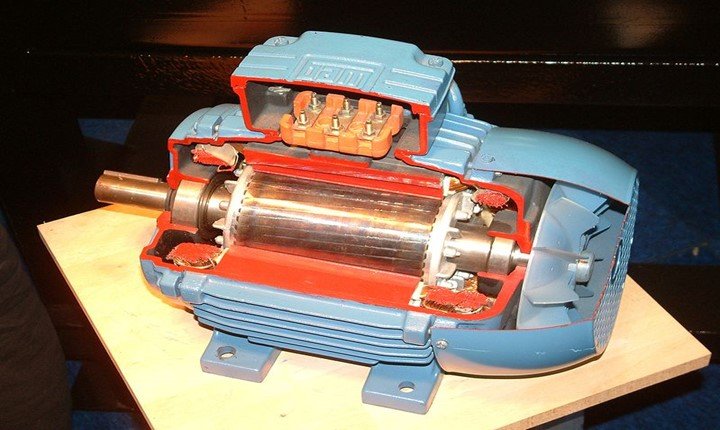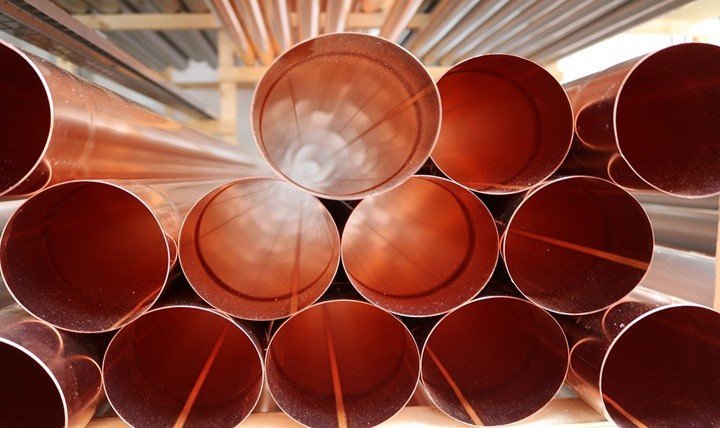This is a chemical element with atomic number 29 and symbol Cu. The metal is soft, ductile, and malleable with high electrical and thermal conductivity. Its color changes to pink-orange when freshly exposed. Copper is referred to as native metal, seeing that it occurs naturally in a metallic form that is used directly. For this reason, it has led to early use in various places from 8000 BC. Copper became the first metal produced from sulfide ores in 5000BC. Also, it is first to be molded into shape during 4000BC and the first metal to be alloyed with other metal in 3500BC.
1. Building material
The metal has been used in ancient times as weatherproof, durable, and corrosion-resistant architectural material. Copper makes domes, doors, roofs, rain gutters, flashings, vaults, and spires. They make attractive bathroom fixtures, countertops, and handrails. Other important benefits as a building material are lightweight, thermal movement, recyclability, and lighting protection. Designers and architects desire the distinctive nature of green patina in the metal. Patina is a durable layer that resists atmospheric corrosion, thus protects beneath metal from weathering. Copper and its alloys can also be finished to get a particular color, look, feel through coloring, treatments, and coatings.
2. Electric motors

It enhances efficiency in electrical motors because of its superior conductivity. This is beneficial since motor-driven systems and motors account for 43% to 46% of electricity consumption. Motor’s efficiency can be increased by increasing cross-section and mass of copper. Motor rotors are a new technology that is designed for applications of motors.
3. Conducting heat
Printed circuit boards and integrated circuits have featured copper instead of aluminum due to its superior heat conductivity. It has heat dissipation characteristics, thus used in heat exchangers and heat sinks. Furthermore, copper act as waveguides in microwave radiation such as electromagnets, cathode ray tubes, vacuum tubes, and magnetrons inside ovens.
4. Decorative art
Copper brings an amazing color in the interior. Its color brings warmth at home and brings luxury, sleek, and slug. It can make furniture, wall tiles, decorative items, sinks, lamps, and kitchen utensils. This metal fits easily in all interiors design like modern, sleek, natural, or monochrome.
5. Fungicides
For over 250 years, copper has been used as protection in agriculture. Copper fungicides treat seed against seed diseases found in cereals. In addition, the fungicides control downy mildew in vine grapes. Plant protection products containing copper destroy over 200 diseases in various crops.
6. Antimicrobial
Surfaces with copper alloy help to kill many microorganisms. Research shows that at least 355 alloys of copper can destroy 99.9% of diseases, causing bacteria in less than two hours if cleaned often. Environmental protection agencies of the United States approve on registration of copper alloys as an antimicrobial with a wide range of health benefits. Manufacturers are able to make products containing the health benefits of copper alloy. These products include handrails, doorknobs, sinks, shopping cart handles, computer keyboards, toilet hardware, and over-bed tables. Copper alloy equipment is now installed in healthcare facilities in order to limit the transfer of diseases. Above and over, textiles fibers are blended with copper so that they can make antimicrobial fabrics.
7. Bacteriostatic agents
The metal is biostatic, and this means that bacteria and other forms of life do not grow. Parts of the ship are lined with copper so as to prevent mussels and barnacles. It is mixed with Muntz metal or copper-based paint. Alloys of copper have become essential materials in aquaculture. They have antimicrobial properties and stop biofouling in harsh conditions. Also, it has strong corrosion-resistant and structural properties in watery environments.
8. Folk medicine
As we all know that copper is part of jewelry. According to folklore, bracelets made from copper are able to reduce arthritis symptoms. Nevertheless, a single trial for osteoarthritis and rheumatoid arthritis does not show differences between copper bracelets and non-copper bracelets. Evidence does not indicate that skin can absorb copper; this may result in copper poisoning.
9. Comprehension of clothing
Health Claims on the Benefits of copper in compression clothing is similar to folklore medicine. Compression clothing containing inter-woven copper is claimed to treat some ailments.
10. Nutrition
This metal is an important element in animals and plants but lack in some microorganisms. The human body consists level of copper at about 1.4- 2.1 mg/kg. It is absorbed inside the gut, transported in the liver as albumin, and distributed to tissues. This second phase involves a protein called ceruloplasmin that carries a lot of copper in the blood. Ceruloplasmin carries copper excreted in milk that is absorbed as a source of copper. Copper absorbed in diet undergoes enterohepatic circulation; excess copper is excreted through bile. Deficiency of copper can lead to symptoms of anemia, bone abnormalities, neutropenia, osteoporosis, and glucose abnormalities. Also, symptoms like cholesterol metabolism, hypopigmentation, impaired growth, and hyperthyroidism.
11. Speculative investing
Copper is used as a speculative investment since it is widely used for the growth of infrastructure. These roles include solar panels, wind turbines, and many renewable sources of energy. Electric cars contain 3.6 times of copper compared to conventional cars. However, the impact of copper in electric cars is still controversial. Most people around the world invest in copper by futures, ETFs, and copper mining stocks. Others keep physical copper as rounds or copper bars, but this carries a great premium, unlike precious metals. The copper premium can be avoided by storing old copper tubing, copper wire, or American pennies.
12. Conducting electricity

Copper remains the better option for electric conductivity despite being competed with other metals. It is used in most electrical wiring apart from the transmission of electric power that prefers aluminum. Copper wire is important in generating power, distributing power, transmitting power, electrical equipment, electronic circuitry, and telecommunications. Most electronic devices rely on metal because of many beneficial properties. This includes tensile strength, electrical conductivity, creep resistance, ductility, easy installation, malleability, high thermal conductivity, resist corrosion, and low thermal expansion. In the late 1970s, aluminum replaced copper in construction projects, which resulted in fires.
13. Constituent of alloys
Copper alloys are a type of metal alloys that copper as the main component. These alloys have superior resistance from corrosion. Best known alloys are bronze, where tin is added and brass that uses zinc.
14. Make coins

Copper is known to make coins since 600BC. Copper alloys are easily molded into coins. They are capable of resisting wear; thus, several most ancient objects have lasted to the present day. Their corrosion-resistant make them last even if they are exposed to harsh conditions or seawater.
15. Make hardware
Computers are created from different plastics, metals, alloys, and other materials. Common metals include copper; gold and lead make various parts of a computer. Copper serves as a conductor but also put on hard disks with zinc, aluminum, silicon, and magnesium.




